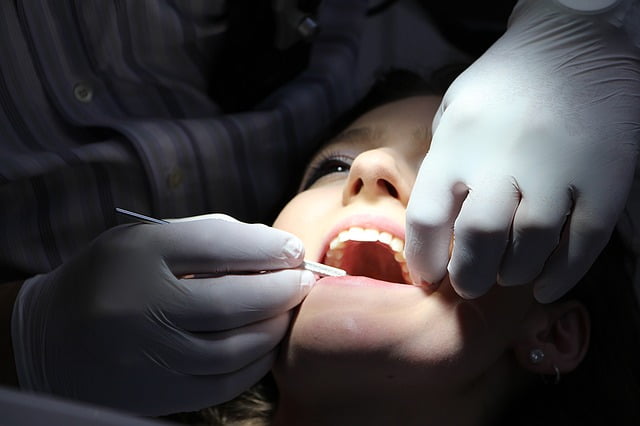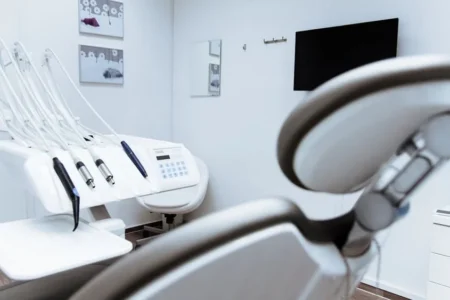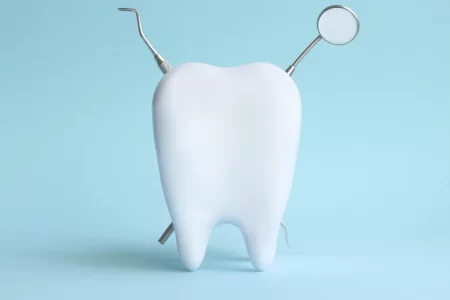What Does a Cavity Look Like?
- Updated on: Jul 23, 2024
- 5 min Read
- Published on Aug 13, 2018

 Tooth Cavities or Caries: What Do They Look Like?
Tooth Cavities or Caries: What Do They Look Like?
A tooth cavity is one of the major health issues among people worldwide. Cavity is also referred as tooth decay due the formation of holes in the teeth.
A cavity may be formed in the enamel (outer coating) or in the dentin (inner coating) of the tooth structure. Cavity formation is not an age-dependent phenomenon rather it depends on the kind of lifestyle one adopts. Excess consumption of foods which are high in carbohydrate (sugar) content such as carbonated drinks, cakes, candies, etc, or tobacco, alcohol, or foods that can stick to the grooves of your teeth can often lead to the formation of cavities. These “sugary” foods in the grooves of the teeth combine with saliva in the mouth. This forms a yellowish colored coat known as plaque which reacts with bacteria present in the mouth, which results in the formation of acids that cause damage or form holes in the teeth.
The acids demineralise the outer, hard part of the tooth and form a pit or hole which is supposed to be a cavity also called dental caries. The common bacteria which accelerate the formation of acids are Streptococcus mutans and Streptococcus sobrinus are bacteria.
Early signs of a cavity
After plaque settles on the teeth, decay begins at the edges, margins or fillings of the teeth. A cavity can be observed when the listed symptoms are felt:
- Sensitivity or mild (sharp) pain can be felt while consuming any hot and cold food item.
- Bad breath or bad taste in mouth.
- Dark spots in grooves of the tooth
- Pus in gums particularly if the cavity has reached the root of the tooth.
- Teeth infections occur as bacterial infections harm the unaffected nearby areas and sometimes can also lead to the formation on ulcers.
The discoloration of the tooth is one major sign of cavity formation that can be observed even if there is no pain felt in the tooth. Black and brown stains or spots become prominent on the front of the tooth or inside the grooves of the tooth in case an already filled cavity is broken or removed.
Well advanced tooth decay is estimated when the crown of the tooth breaks or falls apart and decay reaches deep in the bottom of the tooth. The roots of the teeth have higher chances of getting affected during advanced or severe decays.
More: What to Do For a Toothache Due To Dental Cavity?
More: Home Remedies for Tooth Decay
What Does a Cavity Look Like?
To a layman, what does a cavity look like is generally less concerning than what a cavity feels like or what the pain of cavity me be like. The appearance of a cavity may be different and is observed differently in different cases such as discussed here.
Plaque settles on the teeth giving it a tinted yellow color. This yellowish colored plaque turns into cavity and form holes. Holes which are inside the dentin are not visible through a naked eye. When food settles in the grooves of the teeth and gets acidified, they appear as tinted yellow or dark brown spots on the enamel of the tooth.
A small cavity may appear firstly as a tiny spot and then enlarges in the form of a small hole (like a chalky white area) which is supposed to be the decayed part of the enamel of the tooth.
If the cavity is very small, or the formation has just begun, then the cavity might be only visible as a dark yellow or brown dot like structure on the tooth. If the damage is extensive and the tooth cavity is large i.e. it extends deep into the dentin and further to the root of the tooth, cracks appear as pits in the tooth. This can be properly diagnosed through radiographs.
How does a small cavity spread and grow to an advanced stage cavity?
As plaque settles on the teeth, the process of discoloration of teeth begins. Plaque hardens with time and forms a tartar like material on the teeth. The acid formed by the action of bacteria damages the teeth slowly. No pain can also be felt in this stage, therefore it becomes difficult to detect the formation or growth of cavity.
After the enamel is destroyed, the process of tooth erosion speeds up and the dentin is affected resulting in pain in the tooth and gum line. When erosion hits the deepest part of the tooth i.e. the pulp, the underlying nerves and blood vessels are damaged which causes immense pain and complete decay of the tooth.
How does a cavity appear in an X-ray or a radiograph?
During a dental scan, when a radiograph emits radiations and the X-rays fall on the teeth, the hard mineral substance (i.e. calcium) present in the teeth blocks the entry of radiations which results in portraying a dark (white) structure on the X-ray film. As the tooth decays slowly, the mineral content also reduces. This leads to a decrease in hardness of the tooth which allows the X-rays to penetrate easily inside the tooth and display a darker whitish spot or illuminated area on the X-ray film.
A cavity or tooth decay can be confirmed with the help of a dental X-ray but there is a limitation that the cavity can be detected and studied with the help of an X-ray if about 30% of the tooth structure is already destroyed or decayed. Very small cavities are difficult to be detected through X-rays. Deep tooth decay (decay reaching the nerves) is observed with the help of an X-ray scan and it is helpful a useful tool for the dentists as it facilitates them to determine proper treatment option for the decay when the exact location of the cavity is known.
A dental X-ray scan shows clear gaps and spaces between the teeth which are damaged, broken or decayed. Dark chalky white shadows appear as cavities on the white enamel portion of the teeth when viewed through X-ray or radiograph.
Read: How to read dental X-rays or radiographs for cavities?
Read also: Kids rotten teeth
A few steps to prevent dental cavity:
- Brushing twice a day is best recommended by dentists to keep away the dental problems.
- Dental flossing is best to keep the mouth clean and plaque free, therefore reducing the chances of tooth decay and gum diseases.
- Reducing the intake of sugar in diet and removing hard-to-chew foods in diet is recommended for any person suffering with dental cavity.
- Use of antibacterial mouth-wash to keep the mouth free from bacteria
- Using fluoride toothpaste to fight against tooth decay and tongue scrapper to clean the tongue is suggested.
- Routine dental checkup should be done.
- The fillings in the teeth should also be checked regularly to avoid any pits, cracks and damage. This is done to avoid food bits to settle on those cracks or stick to them.
- Dental sealants are recommended to seal the grooves and nooks and crannies where food can settle easily on the tooth.
The best way to treat cavities is amalgam fillings, crowning of tooth and, in most severe cases, root canal treatment or exfoliation of tooth is suggested by the doctors. Read about treatment of dental cavities.












